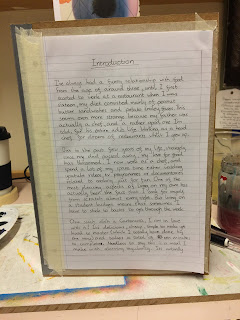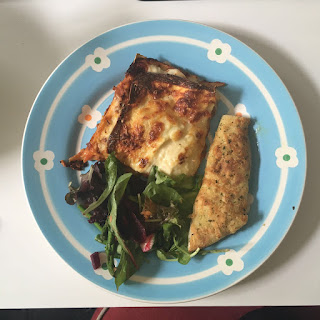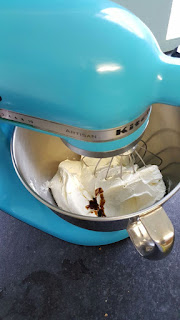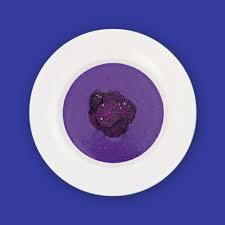So ideally I would like a sole dining table in a room with one place setting, cutlery, wine glass, candle etc. and my finished book where the plate or menu would usually be presented in a dining experience, people would be invited to come and sit down at the table and flick through the book at their leisure, with maybe a 'waiter' there to offer them a drink as they read through.
For my selection though I have had to replace this with just a bog standard serving tray.
Even though the book as a whole is my final 'selection' for this project, I wanted to draw particular attention to this double page spread. It is the only one that I've managed to entirely complete unfortunately but I feel it shows my painting skill and portrays the ideas I have explained for this project. The writing on the left hand page was left intentionally hard to read as people will be so close to the piece anyway that it will be fine and also forces them to really pay attention and pick out the details of the piece, I feel more than they would if it was plastered clearly above the rest of the painting.
For taking this project further I have already talked about experimenting with the social aspect of this subject as it's something that intrigues me. If I was to do a book project similar to this again I think I would want to personally be with the people as they cook so I experience it more fully and also have a standardised plate for everyone to use. This would show the individuality of the person using their food alone and would also allow me to paint them all uniformly lifestyle which I think may be more impactful.


















































